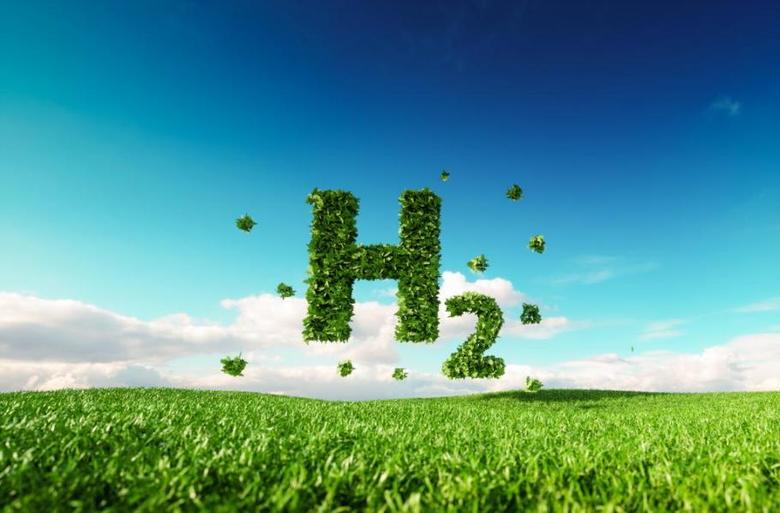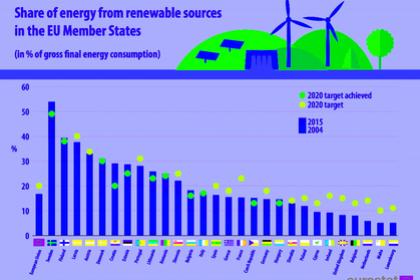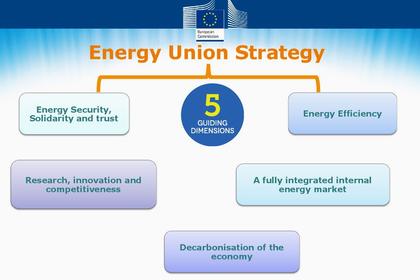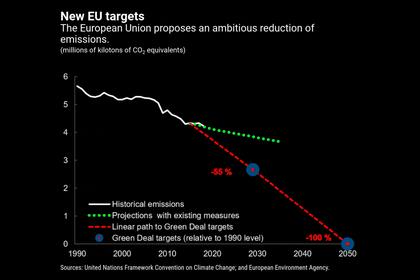
GREEN HYDROGEN FOR EUROPE

By Ashik Kalam Head of Marketing Prospero Events Group -
Business Conferences for the European Energy Sector
ENERGYCENTRAL - Oct 12, 2020 - What needs to hold true for #greenhydrogen to become the fuel that was "promised" ?
Green Hydrogen is gaining wide acceptance in Europe as an answer to a clean energy future? How do we reach a green hydrogen economy? What are the challenges?
The EU Hydrogen Strategy
In May 2020, as Europe was waking up from the first lockdown in response to COVID-19, the European Union (EU) announced earmarking funding up to €30 billion to produce 1 million metric tons (t) of green hydrogen per year, as part of the economic recovery plan to continue its Green Deal. The €30 billion figure now officially confirms that the EU sees Hydrogen as a key enabler in the goal to become carbon neutral by 2050.
The major impediment that comes in between Europe and its green hydrogen dream is how to make it more viable, scalable, and economical to produce, transport and use.
The key challenges associated with clean hydrogen energy are: -
-
Cost and capacity of electrolyzers
-
Availability and affordability of renewable energy
-
Transportation and storage of Hydrogen
-
Effective use Carbon Capture Utilization and Storage (CCUS/CCS) technologies
There are a few unmistakable pain points in Europe’s Hydrogen roadmap to 2050. That is Transportation of Hydrogen (ideally by using current infrastructure or adapting it), the cost and capacity of electrolysers and the availability of renewable energy to produce green hydrogen.
The Cost of Going Green
A lot of factors need to work in synergy to make the EU’s Hydrogen Roadmap a reality. Production of a zero-carbon fuel like green hydrogen through electrolysis is still a tall order for Europe in 2020 without policy and investment push for the states that are reeling under pandemic problems. There is the need for economic or policy incentives for the member states to switch to green hydrogen compared to the encouragement showered on solar and wind energy. If not for subsidies in the form of feed-in tariffs, wind or solar energy would not have become ubiquitous in the European electricity grid. If we were to go by the European Commission figures, the cheapest grey hydrogen costs 1.5 euros per kilogram to produce, blue hydrogen costs 2 euros/kg and green up to 5.5 euros/kg.
At the moment, subsidies or incentives would have to help bridge this gap. As production of hydrogen ramps up and technologies become mature, the subsidies can be phased out. IEA (International Energy Analysis) finds that the cost of producing hydrogen from renewable electricity could fall 30% by 2030 because of the declining costs of renewables and the scaling up of hydrogen production.
Cost and Capacity of Electrolysers
Cheap electrolysis is vital for bringing down the cost of green hydrogen production. To produce enough Green Hydrogen for the world, the cost, production capacity and efficiency of electrolysers must be improved upon. Over the past three years, the British electrolyzer manufacturer ITM Power has halved the cost of its equipment, to about $890 per kilowatt of capacity. By the mid-2020s, the company expects to reduce costs to $555 per kilowatt.
The European Commission’s current push of €470 billion to be spent on electrolyzer capacity in the next 30 years is definitely paving the way ahead. It also envisions 6 GW of new electrolyzer capacity to produce a million tons of green hydrogen in the next four years. And within 2025-30, the electrolyser capacity will ramp up to 40 GW to cater green hydrogen in ‘hard-to-decarbonize’ industrial sectors.
Availability and Affordability of Renewable Energy
According to the International Renewable Energy Agency (Irena), the world will need 19 exajoule (EJ) of green hydrogen in the energy system in 2050 — between 133.8 million and 158.3 million tonnes a year. Producing this amount of Green Hydrogen through electrolysis would require 6,690TWh of renewable electricity every year — the equivalent of 1,775GW of offshore wind farms, 2,243GW of onshore wind, 4,240GW of solar PV. In comparison, the current total wind capacity in the world is 435 GW, and the solar power capacity 585 GW.
A transition through Blue Hydrogen and CCS (Carbon Capture and Storage)
Until green hydrogen becomes more economically viable, blue hydrogen is transitory yet important energy source to bank on. Further development of cheap and effective CCS technologies will be a key to enable widespread use of blue hydrogen. In the wake of Equinor’s plan to build a CCS-based blue hydrogen plant in the UK',, Sveinung Hagen, Leading Advisor CCS Value Chain, Equinor will share insights into the role of Carbon Capture and Storage (CCS) in 10 years at Green Hydrogen 2020.
Transporting Hydrogen & European Hydrogen Backbone
Italy's Snam, Spain's Enagás, Belgium's Fluxys and the Netherlands' Gasunie are among the energy companies that are working on creating the EU hydrogen backbone with 6,800 km hydrogen pipeline network by 2030, which could lead to 23,000 km by 2040 to facilitate hydrogen transportation. 75% of this network would comprise converted gas pipelines as studies suggest that they are about 10-20 times cheaper than electricity transport cost by a cable. Snam has already chalked out a plan to blend 10% of hydrogen with natural gas in its network for testing. Cosma Panzacchi Executive Vice President Business Unit Hydrogen Snam SPA will speak at Green Hydrogen 2020 about European Hydrogen Backbone and long-distance transportation for hydrogen.
Storing Hydrogen
Though it is versatile, its low density makes it hard to store and move around. Hydrogen may be stored as a compressed gas, as liquid H2 under high pressure and low temperature or cryo stored. Material based technologies for adsorption are also gaining prominence. The recent blast at a Norwegian hydrogen filling station highlights its inflammability and the need for safe storage.
The Future of Green Hydrogen
The hydrogen economy is bringing together energy, industrial gases, and the automotive industries to work together to explore the possibilities of green hydrogen, its production, transportation, and for carbon dioxide capture, together. There is plenty of potential, however technologies must mature before we reach a scalable and economically viable hydrogen economy.
-----
This thought leadership article was originally shared with Energy Central's Clean Power Community Group. The communities are a place where professionals in the power industry can share, learn and connect in a collaborative environment. Join the Clean Power Community today and learn from others who work in the industry.
-----
Earlier:















